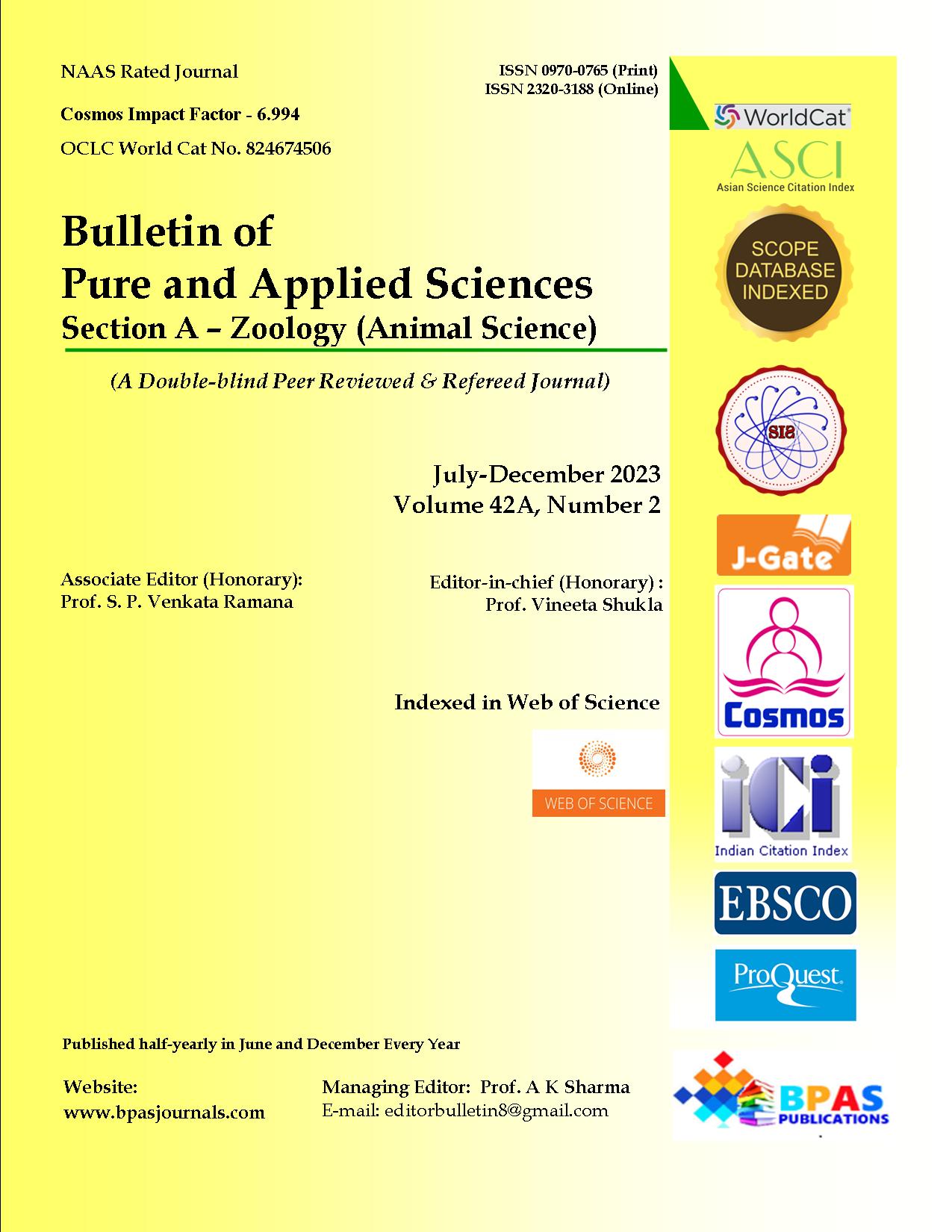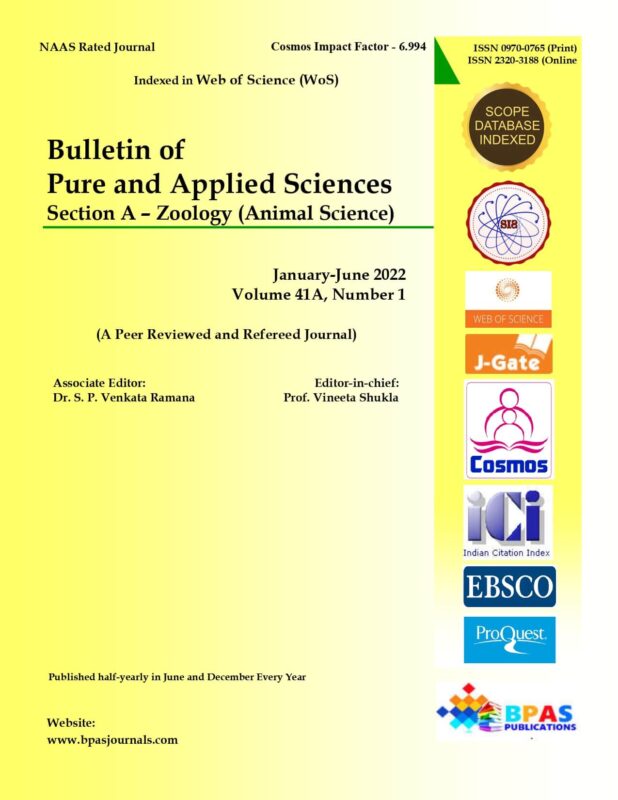Environmental Factors Affecting the Distribution of Selected Free-Living Isopods in the Southern Coast of Kerala, India
9.38$
1Arya Unni, 2Balamurali R.S. * and 3Amrutha S.S.
Bulletin of Pure and Applied Sciences
Zoology (Animal Science), Vol.42A, No.2,
July-December 2023: P.230-241
Description
1Arya Unni, 2Balamurali R.S. * and 3Amrutha S.S.
| Author’s Affiliation:
1Research Scholar, Postgraduate, Department of Zoology and Research Centre, Mahatma Gandhi College, Thiruvananthapuram, 695004, Kerala, India 2Professor & Head of the Department, Postgraduate, Department of Zoology and Research Centre, Mahatma Gandhi College, Thiruvananthapuram, 695004, Kerala, India 3Research Scholar, Postgraduate, Department of Zoology and Research Centre, Mahatma Gandhi College, Thiruvananthapuram, 695004, Kerala, India
|
| *Corresponding author:
Dr. Balamurali R.S., Professor & Head of the Department, Postgraduate, Department of Zoology and Research Centre , Mahatma Gandhi College, Thiruvananthapuram, 695004, Kerala, India E-mail: baluin@gmail.com
|
| Article Info:
Received on 23.04.2023 Revised on 16.08.2023 Approved on 02.10.2023 Accepted on 16.10.2023 Published on 20.12.2023 |


